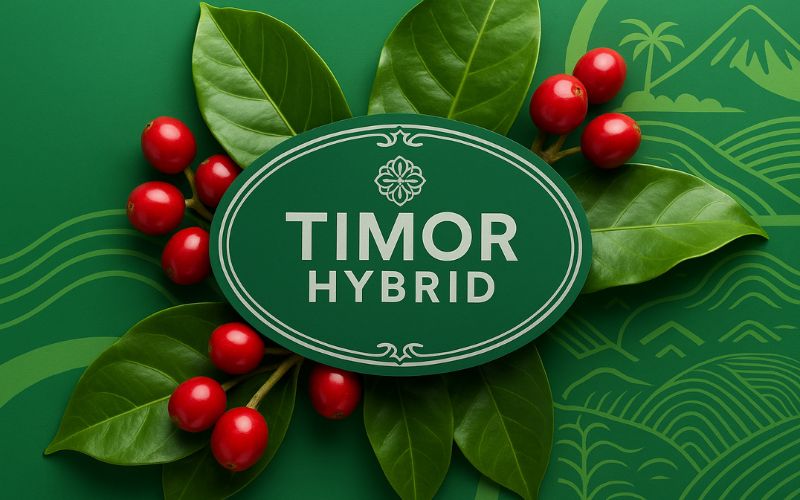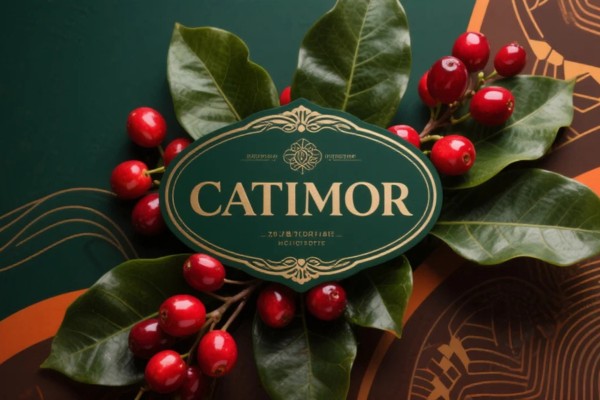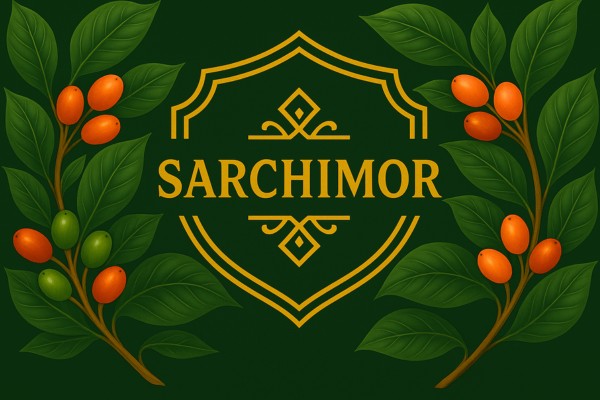
Timor Hybrid: The Accidental Savior
Discover the fascinating story of the Timor Hybrid (Hibrido de Timor or HDT), the spontaneous and crucial natural cross between Arabica and Robusta. Learn how its accidental discovery provided the single most important source of rust resistance used to create modern coffee varieties like Catimor and Sarchimor.
The Timor Hybrid: A Spontaneous Genetic Revolution
The Timor Hybrid, often abbreviated as HDT (from the Portuguese Híbrido de Timor), is arguably one of the most important coffee plants of the 20th century. However, its importance doesn't come from its own cup quality, which is often considered inferior, with Robusta-like flavor characteristics.
Instead, the Timor Hybrid is celebrated as an accidental savior. It is a spontaneous, natural cross between Coffea arabica and Coffea canephora (Robusta) that occurred on the island of Timor in Southeast Asia.
This natural hybridization was a genetic miracle. It resulted in a plant that had the same chromosome count as Arabica (making it easy to cross-breed) but carried the robust, disease-resistant genes of its Robusta parent. Specifically, it provided the first and most important source of genetic resistance to coffee leaf rust (la roya), the devastating disease that has plagued Arabica coffee for centuries.
Discovery on a Small Island
In the early 20th century, coffee leaf rust swept through the coffee farms of Southeast Asia, devastating the Typica and Bourbon varieties that were grown there.
On the island of Timor, both Arabica and Robusta coffee were being cultivated. In the 1920s, on a single plantation, a coffee plant was found that appeared to be Arabica but was showing strong resistance to the rust that was destroying all the plants around it.
It was later identified as a natural hybrid between the two species. This single plant and its descendants became the foundation for virtually all modern, rust-resistant Arabica coffee breeding programs around the world.
A Problematic Flavor Profile
While its disease resistance was a monumental discovery, the cup quality of the pure Timor Hybrid was a significant issue.
- Acidity: The acidity is typically low or non-existent.
- Body: It often has the heavy, rubbery body characteristic of Robusta coffee.
- Flavor: The flavor is often described as rubbery, woody, and bitter, with a distinct lack of the sweetness, complexity, and delicate notes that make Arabica so prized.
Because of this poor cup profile, the Timor Hybrid is not grown as a standalone specialty coffee variety. Its value is not in its own cherries, but in its genes.
The Parent of an Entire Generation of Hybrids
The true importance of the Timor Hybrid is its role as a parent. Coffee breeders realized that they could cross the Timor Hybrid with traditional, high-quality Arabica varieties to create new plants that had both good flavor and rust resistance.
This led to the creation of the "Catimor" and "Sarchimor" groups of coffee varieties.
- Catimor: This is a cross between Caturra and the Timor Hybrid. The goal was to combine the compact size and productivity of Caturra with the rust resistance of the Timor Hybrid. Varieties like Costa Rica 95, Catuai 144, and Lempira are all types of Catimors.
- Sarchimor: This is a cross between Villa Sarchi and the Timor Hybrid. The goal was the same: to create a compact, rust-resistant plant with good potential for quality. Varieties like Parainema and Marsellesa are types of Sarchimors.
Further breeding work using these lines has led to the development of even more advanced varieties like Castillo and its siblings in Colombia, which now make up the majority of that country's coffee production.
The Trade-Off: Resistance vs. Quality
The use of the Timor Hybrid in breeding has been a subject of debate in the specialty coffee industry for years.
- The Pro: It has been absolutely essential for the economic survival of millions of coffee farmers. Without the rust resistance provided by the Timor Hybrid, coffee production would be impossible in many parts of the world.
- The Con: There is a widespread belief that the Robusta genes, while providing resistance, also bring a negative impact on cup quality. Many people in the specialty industry feel that even the best Catimor or Sarchimor hybrids can never reach the same level of complexity and elegance as a pure, classic variety like Bourbon or Typica.
This tension between the pragmatic need for disease resistance and the idealistic pursuit of the highest possible cup quality is one of the most important dynamics in the modern coffee world.
Conclusion: The Unsung Genetic Hero
The Timor Hybrid is the unsung hero of the modern coffee farm. You will likely never order a "cup of Timor Hybrid" at a cafe, but its genetic fingerprint is present in a huge percentage of the coffee consumed around the world today.
It was a chance discovery, a lucky accident of nature that provided coffee scientists with the single most important tool in the fight against coffee leaf rust. Its legacy is the continued existence of coffee farming in countless communities, and it represents a crucial, if controversial, chapter in the ongoing story of coffee's evolution.


